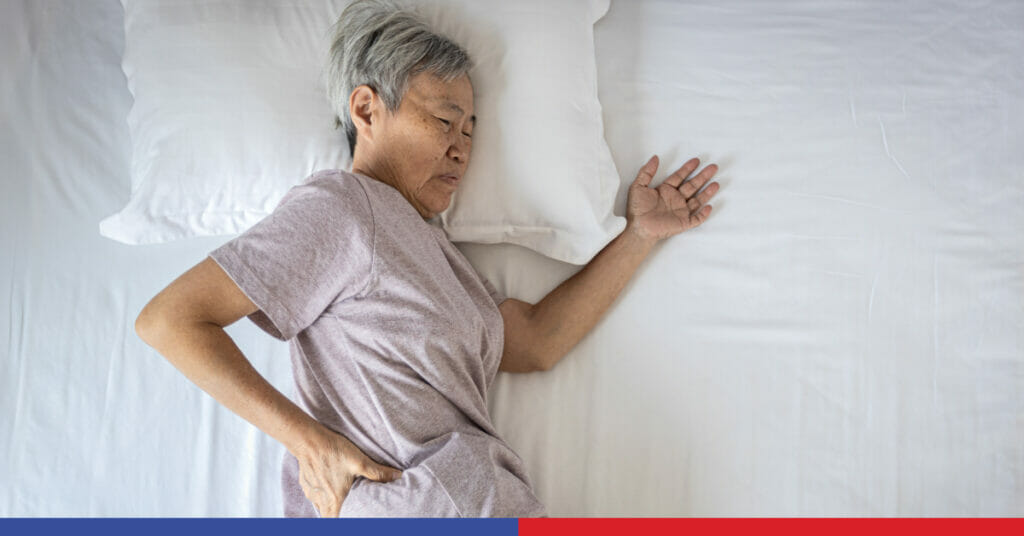Which Sleeping Position Prevents Back Pain?

“The best way to relax is by sleeping,” but if you sleep in the wrong position, it can quietly harm your spine. There are many wrong sleeping positions, and it is believed that many people are sleeping in these positions. For example, curling up in a fetal position, sleeping on your stomach, sleeping in a half-sitting, half-lying position, and sleeping with your arms under your body. These sleeping positions may lead to back pain.
Many people may be familiar with the idea that the best amount of sleep is 8 hours per night. Humans spend up to 1/3 of their lives sleeping, and sleep is a crucial time for the body to recover and repair itself. However, did you know that simply getting 8 hours of sleep per day may not yield enough quality? The correct sleeping posture is also important for the health of your body and your spine.
For the correct sleeping posture, specialist doctors recommend sleeping on your side because it’s a posture that keeps your spine in a suitable curve. It’s also advisable to sleep on your side with your knees slightly bent and place a pillow between your legs. This helps keep your hips aligned with your spine, preventing any misalignment of the normal state and allowing for a more restful sleep.
Sleeping on your side with your arms close to your body: This is the best sleeping position for your spine. It helps your body maintain a natural posture and can simultaneously alleviate back and neck pain. Additionally, it may help reduce issues with snoring. However, if you sleep on your arms for extended periods, it may lead to shoulder and arm pain. To avoid this, you can change your sleeping position from time to time during the night.
Sleeping on your right side with your knees bent: Sleeping on your right side is indeed a good sleeping position that can help alleviate back pain, especially if you bend one of your knees while hugging a side pillow, or bending both knees, which can further alleviate back pain.

Nevertheless, pillows are considered a crucial factor in adjusting your sleeping position correctly. First, it’s essential to understand that a good pillow doesn’t primarily support the head but should provide neck support. Therefore, it’s better to use a pillow designed to support the neck rather than the head. If you use a pillow to support your head, it may lead to excessive bending of the neck, causing the neck muscles to tense up. On the other hand, sleeping with a high pillow can cause your back to curve more and may be a cause of back pain.
In general, younger individuals often prefer using low pillows, which reduces the curvature of the spine. On the other hand, older people tend to favor high pillows because they can make breathing more comfortable. However, using high pillows can lead to more curvature in the spine and can increase the likelihood of neck pain.
However, people have different physical characteristics, including variations in the curvature of the head. Therefore, it’s important to use a pillow that suits individual physical characteristics.
Even if you have adjusted your sleeping position correctly, if you still experience neck or back pain, it is advisable to consult a specialist doctor at the S Spine and Nerve Hospital, a hospital specializing in spinal care. We are the one and only spine and nerve specialists in Thailand.
Information From
Tanawat Ounahachok, M.D.
Spine Specialist









